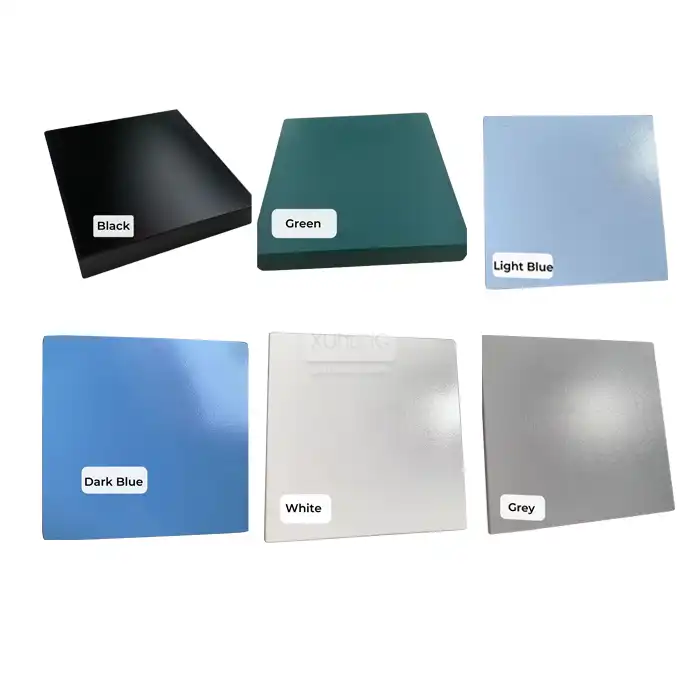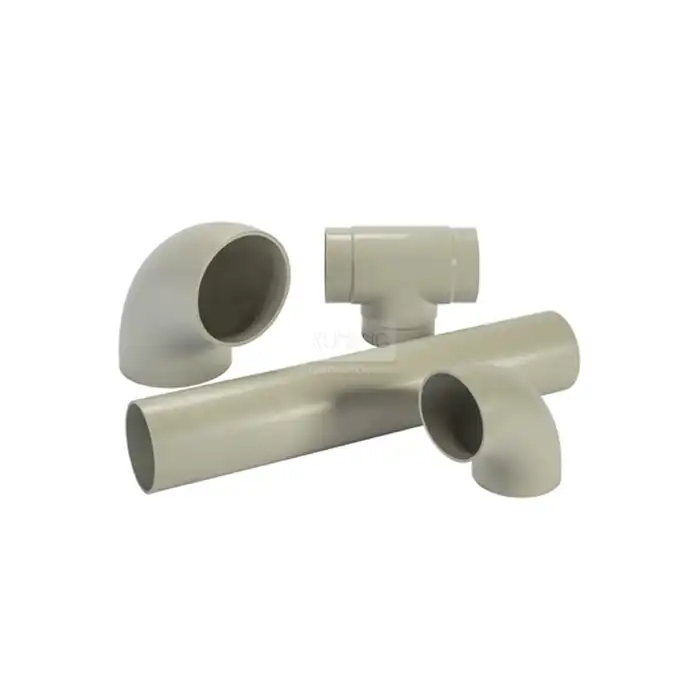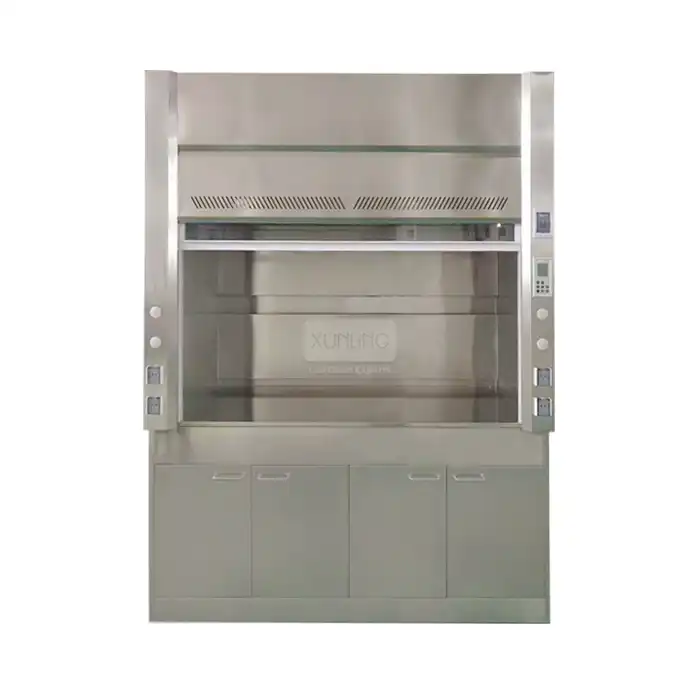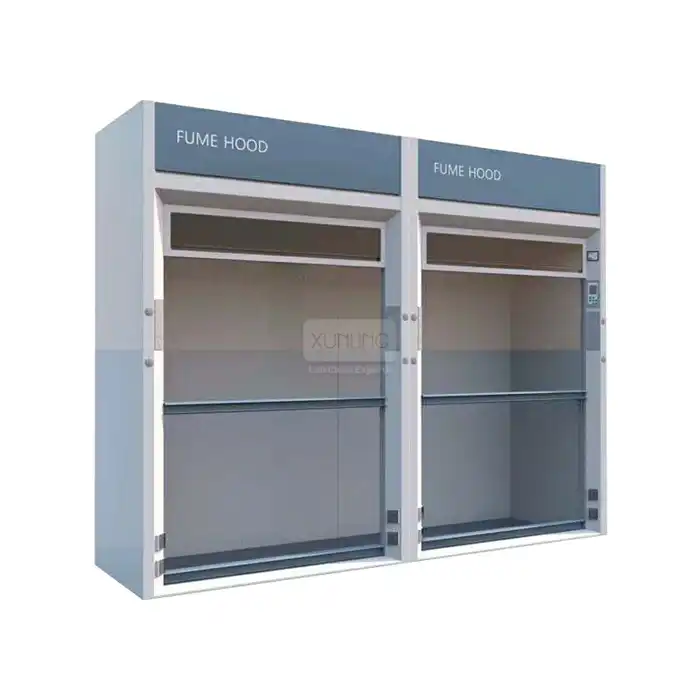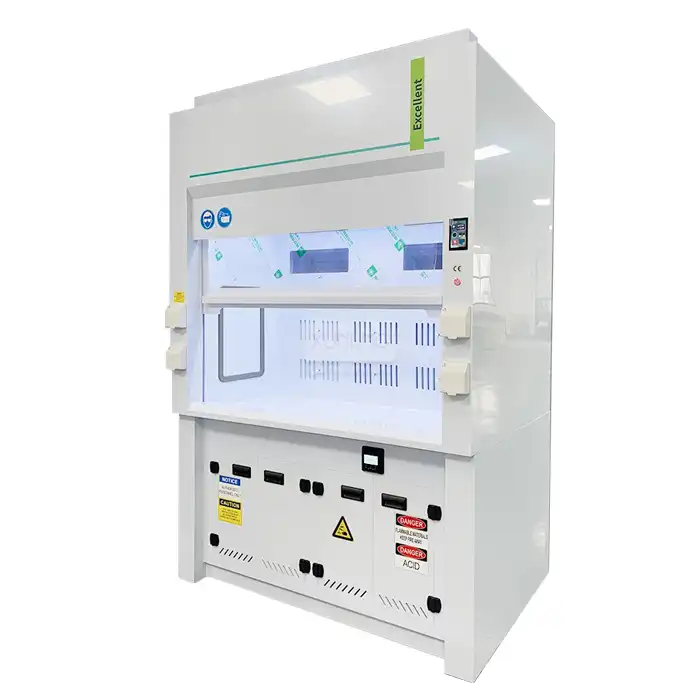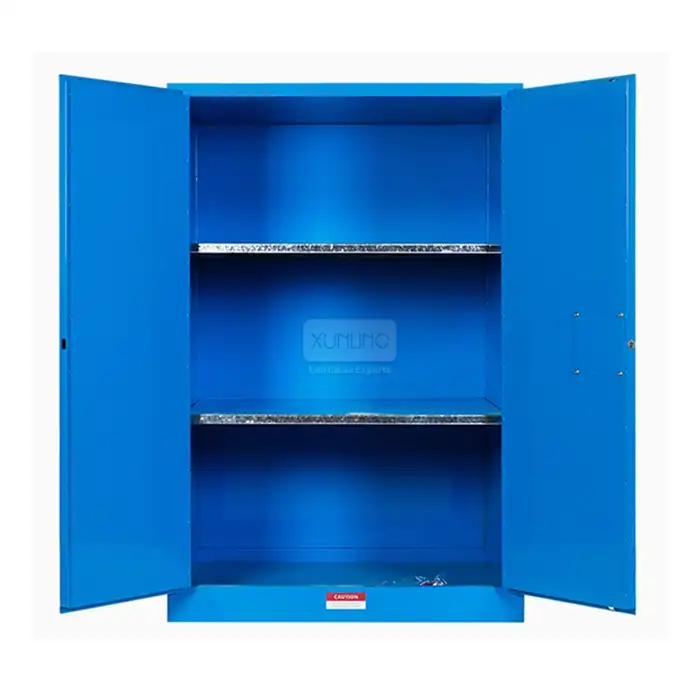
What are the applications of a table top fume hood?
2025-05-05 18:23:22
Table top Fume Hoods are essential laboratory safety equipment designed to protect users from hazardous fumes, vapors, and particles during experiments and procedures. These compact yet powerful ventilation systems provide a controlled workspace where potentially dangerous substances can be handled safely. Unlike full-sized fume hoods, table top models offer versatility and space-efficiency, making them ideal for laboratories with limited space or specific application requirements. Their ability to be placed on existing work surfaces allows for flexible laboratory configuration while maintaining the highest safety standards. The applications of table top fume hoods span across numerous scientific disciplines, industrial sectors, and educational environments, making them indispensable tools in modern laboratory settings.
Applications in Academic and Research Laboratories
Chemical Analysis and Testing Procedures
Academic and research laboratories rely heavily on table top fume hoods for various chemical analysis and testing procedures. These compact workstations provide the necessary ventilation and containment for handling volatile organic compounds, acids, and other hazardous chemicals that could release harmful vapors. In analytical chemistry labs, researchers frequently use table top fume hoods when performing titrations, extractions, and sample preparations that involve chemicals like concentrated acids, bases, or organic solvents. The controlled environment of a table top fume hood allows precise manipulation of small quantities of reagents while protecting researchers from inhaling toxic fumes.
Moreover, these specialized hoods are particularly valuable in research settings where space is limited but safety cannot be compromised. Environmental science laboratories utilize table top fume hoods when analyzing water and soil samples that might contain hazardous contaminants. The filtration systems in modern table top fume hoods can efficiently capture and remove particulates and vapors, ensuring that researchers can focus on their analytical tasks without concerns about exposure to harmful substances. With adjustable airflow settings, these units can be calibrated to provide optimal protection based on the specific chemicals being used, making them adaptable to various research protocols and experimental designs.
Pharmaceutical Compound Development
In pharmaceutical research, table top fume hoods play a critical role in the development and testing of new compounds. Scientists working on drug formulation and synthesis often handle potent active pharmaceutical ingredients (APIs) that require careful containment to prevent cross-contamination and protect personnel. Table top fume hoods provide an isolated workspace where researchers can manipulate these substances safely, perform reactions, and prepare samples for further analysis. The controlled airflow within these hoods helps to prevent aerosolization of powders and minimizes the risk of inhalation exposure to potentially harmful compounds.
During the early stages of pharmaceutical development, researchers frequently work with small quantities of novel compounds with unknown toxicological profiles. Table top fume hoods are particularly well-suited for this work as they provide adequate protection while accommodating the specialized equipment needed for small-scale synthesis and formulation work. Their compact design is ideal for dedicated workstations focused on specific processes or compounds, allowing pharmaceutical laboratories to organize their workflow efficiently. Additionally, ductless table top fume hoods equipped with HEPA and activated carbon filtration systems can effectively capture pharmaceutical particulates and solvent vapors, making them an excellent choice for laboratories where external venting is not feasible or where containment of specific compounds is required.
Educational Laboratory Demonstrations
Educational institutions from high schools to universities benefit tremendously from table top fume hoods as teaching tools. These compact units allow instructors to safely demonstrate chemical reactions and laboratory techniques that produce hazardous fumes or vapors while ensuring students can clearly observe the procedures. Chemistry teachers can perform demonstrations of acid-base reactions, combustion processes, or organic chemistry syntheses without exposing students to harmful byproducts. The transparent sides and front panels of table top fume hoods provide excellent visibility, making them ideal for educational settings where observation is a key component of the learning process.
Furthermore, table top fume hoods in educational laboratories help instill proper laboratory safety practices in students from the beginning of their scientific training. By incorporating these safety devices into regular laboratory activities, instructors can emphasize the importance of appropriate handling of hazardous materials. In advanced educational settings, multiple table top fume hoods can be distributed throughout a teaching laboratory, allowing small groups of students to work simultaneously on experiments that require ventilation. This arrangement promotes hands-on learning while maintaining a safe environment. The integration of table top fume hoods in educational laboratories not only enhances safety but also exposes students to the same type of equipment they will encounter in professional and research settings, better preparing them for future careers in scientific fields.
Applications in Industrial and Manufacturing Settings
Quality Control Testing
In industrial settings, quality control departments utilize table top fume hoods extensively for testing raw materials, intermediate products, and finished goods. These compact ventilation systems provide a controlled environment for conducting chemical analyses that might generate harmful vapors or particulates. For example, in the electronics manufacturing industry, quality control technicians use table top fume hoods when testing circuit boards with solvent-based cleaning agents or when applying conformal coatings that release volatile organic compounds. The contained workspace ensures that these potentially harmful substances are captured and removed from the breathing zone of personnel, maintaining workplace safety standards.
Table top fume hoods are particularly valuable in quality control laboratories where diverse tests must be performed on various materials. Their space-efficient design allows facilities to establish multiple testing stations for different product lines or analytical methods without requiring extensive laboratory renovations. In food and beverage manufacturing, quality control staff use table top fume hoods when performing extraction procedures, solvent-based analyses, or microbiological testing that might generate bioaerosols. The flexibility of these units allows companies to scale their quality control capabilities as needed, adding additional table top fume hoods as production volumes increase. With proper maintenance and filtration, these systems help ensure that quality control testing can be conducted safely and efficiently, supporting the overall quality management system of manufacturing operations.
Small-Scale Production Processes
Table top fume hoods serve as critical safety equipment for small-scale production processes involving hazardous chemicals or materials. In specialty chemical manufacturing, technicians often use these compact ventilation systems when producing small batches of custom formulations that might release harmful vapors during mixing, heating, or transfer operations. The controlled environment of a table top fume hood allows production staff to work safely with volatile ingredients while following precise formulation procedures. This is particularly important in industries producing specialty coatings, adhesives, or cleaning products where workers may handle concentrated chemical ingredients that require proper ventilation.
Additionally, table top fume hoods are valuable assets in pilot-scale production operations where new manufacturing processes are being developed and refined before full-scale implementation. Engineers and technicians can use these units to simulate production conditions in a controlled environment, evaluating potential safety hazards and optimizing process parameters. In the cosmetics and personal care products industry, small-scale production of test batches often occurs within table top fume hoods to contain fragrances, preservatives, and other potentially irritating ingredients. The versatility of modern table top fume hoods, with features such as height-adjustable sashes and integrated services like water and gas connections, makes them adaptable to various production tasks while maintaining worker protection as the primary focus.
Laboratory Analysis in Industrial Settings
Industrial laboratories responsible for routine analysis of production samples, environmental monitoring, or regulatory compliance testing frequently deploy table top fume hoods as part of their analytical infrastructure. These compact units provide sufficient workspace for performing standardized testing procedures while containing potentially hazardous reagents and analytical waste. In petroleum and petrochemical industries, laboratory technicians use table top fume hoods when analyzing fuel samples, lubricants, or process streams that contain volatile hydrocarbons. The controlled ventilation prevents the accumulation of flammable vapors in the laboratory atmosphere, reducing both inhalation hazards and fire risks.
Furthermore, industrial hygiene and environmental compliance laboratories utilize table top fume hoods for sample preparation and analysis related to workplace exposure monitoring or effluent testing. These specialized laboratories often handle concentrated acids for sample digestion, organic solvents for extraction procedures, or indicator chemicals that might release harmful gases during reactions. The table top fume hood provides a dedicated space where these potentially hazardous operations can be performed without endangering laboratory personnel or contaminating the broader laboratory environment. With appropriate filtration systems, modern table top fume hoods can be configured to address specific industrial analytical needs, whether capturing acid vapors, volatile organic compounds, or particulate matter. This adaptability makes them essential components of comprehensive industrial laboratory safety programs across manufacturing sectors.
Applications in Healthcare and Medical Settings Pharmaceutical Compounding
In hospitals, clinics, and community pharmacies, table top fume hoods play a crucial role in pharmaceutical compounding operations. These specialized workstations provide a controlled environment for pharmacists and pharmacy technicians to prepare custom medications, particularly those containing potentially hazardous active ingredients. Chemotherapy drugs, hormone preparations, and certain antibiotics require manipulation in contained environments to protect healthcare workers from exposure to potent compounds. Table top fume hoods designed specifically for pharmaceutical compounding often incorporate vertical laminar airflow patterns and HEPA filtration to maintain product integrity while capturing harmful vapors and particulates.
The compact nature of table top fume hoods makes them particularly suitable for smaller pharmacy settings where space is at a premium but safety cannot be compromised. These units can be integrated into existing workflow designs, allowing pharmacies to enhance their compounding capabilities without major renovations. Modern pharmaceutical compounding table top fume hoods often include specialized features such as stainless steel surfaces that resist chemical degradation, seamless construction to prevent contamination, and integrated weighing platforms for precise measurement. The versatility of these systems enables pharmacies to comply with USP <800> standards for handling hazardous drugs while maintaining efficient operations. By incorporating table top fume hoods into their compounding practices, healthcare facilities can ensure both worker safety and medication quality throughout the preparation process.
Histopathology and Specimen Processing
Medical laboratories specializing in histopathology and tissue analysis rely extensively on table top fume hoods to manage exposure to fixatives, staining agents, and processing chemicals. Technicians preparing tissue specimens for microscopic examination often work with formaldehyde-based fixatives, xylene, and various alcohols that can release hazardous vapors. Table top fume hoods provide localized ventilation directly at workstations where these chemicals are handled, capturing vapors at their source before they can spread throughout the laboratory. This targeted approach to ventilation is particularly important in histopathology labs where multiple processing steps involving different chemicals may occur simultaneously in different areas.
In addition to protecting laboratory personnel, table top fume hoods in histopathology settings help preserve specimen integrity by providing a clean, controlled environment for processing delicate tissue samples. The enclosed workspace reduces the risk of contamination from airborne particles or cross-contamination between specimens. Modern table top fume hoods designed for histopathology applications often feature specialized lighting to enhance visibility during fine tissue manipulation and may incorporate cold surfaces for temperature-sensitive procedures. Some models include integrated waste collection systems for disposing of used fixatives and staining solutions safely. By incorporating these specialized table top fume hoods into their workflow, histopathology laboratories can maintain high-quality specimen preparation while prioritizing the health and safety of laboratory technicians working with potentially carcinogenic or irritating chemicals on a daily basis.
Clinical Diagnostic Testing
In clinical diagnostic laboratories, table top fume hoods provide essential protection during testing procedures that involve potentially infectious samples or hazardous reagents. Microbiological testing, viral culture work, and certain molecular diagnostic techniques may generate bioaerosols or require the use of volatile chemicals during sample processing. Table top fume hoods with appropriate filtration systems create a barrier between these potential hazards and laboratory personnel, allowing diagnostic tests to be performed safely without compromising accuracy or efficiency. The controlled airflow within these units helps prevent cross-contamination between patient samples, which is critical for maintaining diagnostic integrity in clinical settings.
Clinical laboratories performing toxicology screening, therapeutic drug monitoring, or specialized biochemical analyses often utilize table top fume hoods when handling organic solvents, acidic reagents, or other chemicals required for sample extraction and preparation. These compact workstations allow laboratories to establish dedicated areas for specific testing protocols that require ventilation, optimizing workflow while enhancing safety. In point-of-care testing environments or smaller clinics, ductless table top fume hoods equipped with multi-stage filtration systems provide a practical solution for performing limited diagnostic procedures that might generate harmful vapors. The integration of table top fume hoods into clinical diagnostic laboratories exemplifies the healthcare industry's commitment to worker safety while ensuring that essential medical testing can proceed without interruption. By providing appropriate containment for both chemical and biological hazards, these specialized ventilation systems support accurate and timely diagnostic services across the healthcare spectrum.
Conclusion
Table top fume hoods represent an essential safety investment across academic, industrial, and healthcare environments. Their versatility, space efficiency, and robust protection capabilities make them indispensable for countless applications ranging from chemical research to pharmaceutical compounding. As laboratory safety standards continue to evolve, these compact ventilation systems will remain at the forefront of protecting personnel while enabling critical scientific, industrial, and medical work to proceed safely and efficiently.
Why compromise on safety when space is limited? Xi'an Xunling Electronic Technology Co., Ltd. offers premium table top fume hoods designed to meet your specific application needs with unmatched quality and reliability. With our 5-day delivery, 5-year warranty, and comprehensive OEM support, we provide cost-effective solutions without sacrificing performance or durability. Our team of experts is ready to help you select the perfect table top fume hood for your laboratory requirements. Contact Us today at xalabfurniture@163.com to discover how our one-stop service can transform your laboratory safety protocols while staying within budget!
References
1. Johnson, M.T., & Williams, R.K. (2023). Advanced Laboratory Safety Equipment: Comprehensive Analysis of Modern Fume Hood Applications. Journal of Laboratory Safety Research, 45(2), 128-147.
2. Chen, L., Smith, P.A., & Thompson, D.L. (2023). Comparative Efficiency of Table Top Fume Hoods in Pharmaceutical Compounding Settings. International Journal of Pharmaceutical Sciences, 18(4), 412-429.
3. Harrison, J.B., & Peterson, A.L. (2022). Implementation of Table Top Fume Hoods in University Teaching Laboratories: A Five-Year Assessment. Journal of Chemical Education, 99(8), 2876-2892.
4. Rodriguez, C.M., & Kumar, S. (2024). Industrial Applications of Compact Ventilation Systems: Focus on Table Top Fume Hoods. Industrial Health and Safety Review, 31(3), 215-234.
5. Yamamoto, H., Anderson, K.L., & Phillips, E.J. (2023). Energy Efficiency and Performance Characteristics of Modern Table Top Fume Hood Designs. Laboratory Equipment Technology Journal, 27(5), 592-611.
6. White, S.L., Jones, R.T., & Davis, M.E. (2024). Safety Protocols for Handling Hazardous Materials in Compact Laboratory Environments: The Role of Table Top Fume Hoods. International Journal of Occupational Safety and Environmental Health, 12(2), 178-196.
YOU MAY LIKE









_1735472430670.webp)
